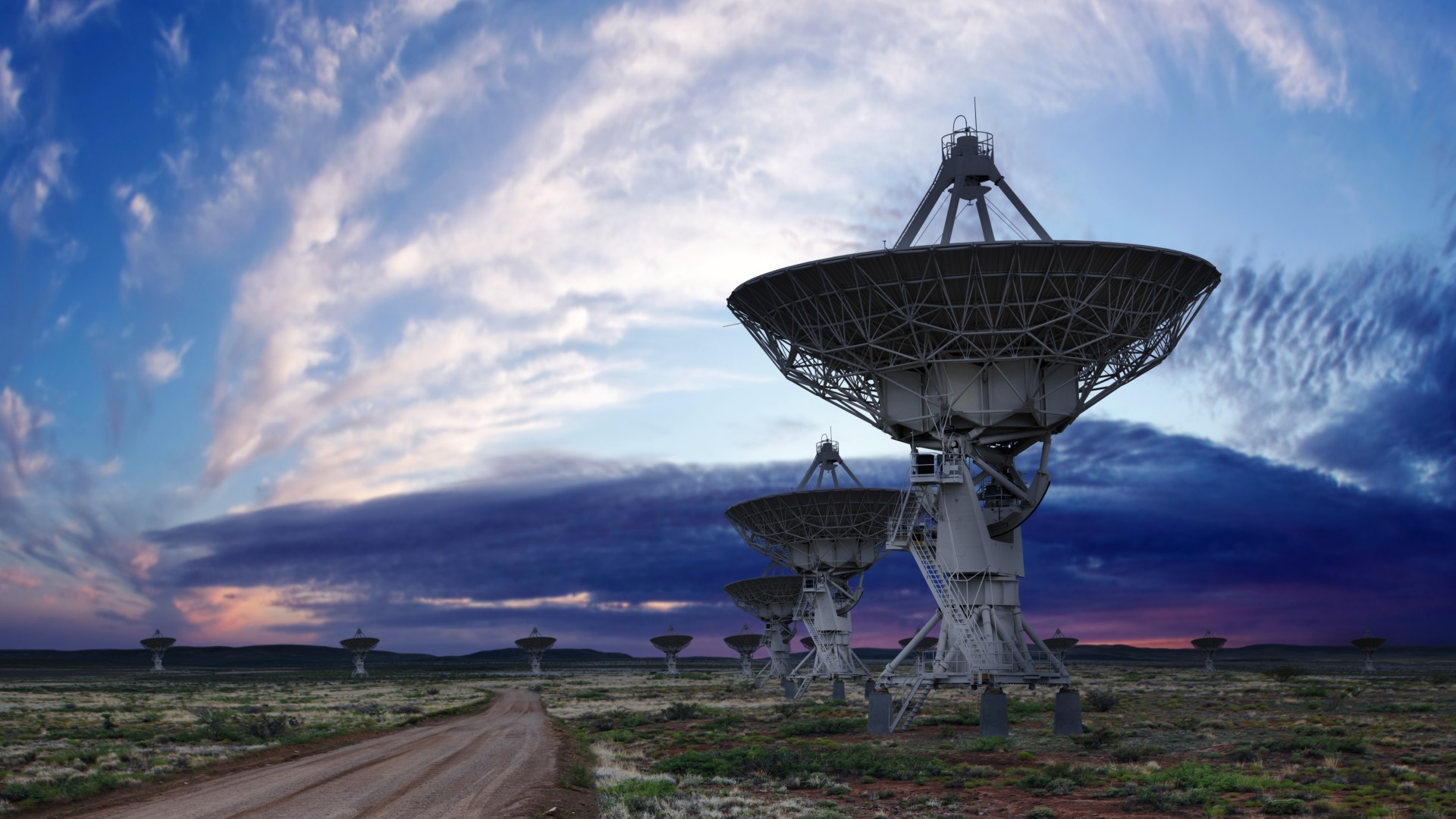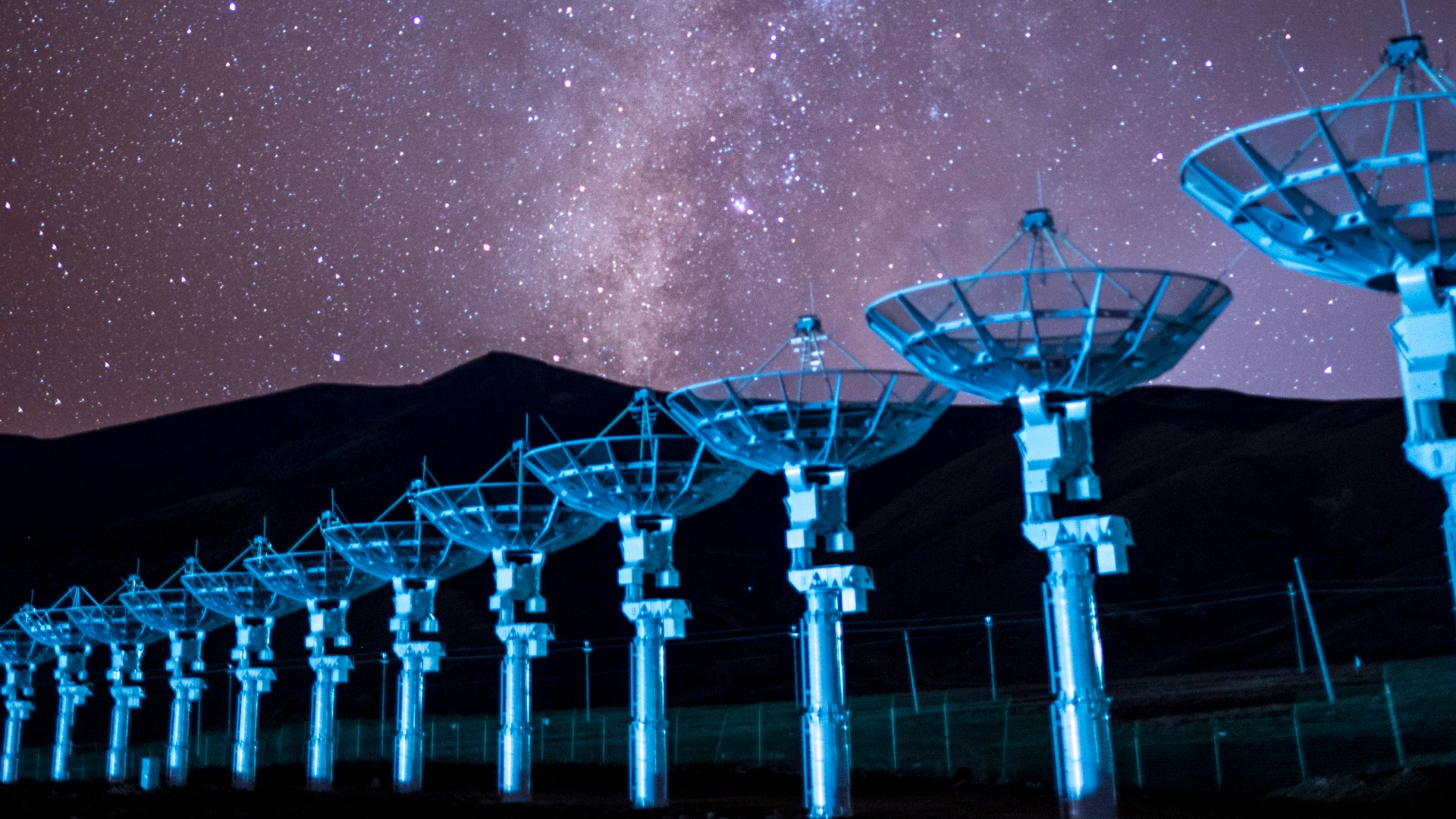Why haven't aliens contacted Earth? New Fermi Paradox analysis suggests we're not that interesting yet

If life happened here, then it likely happened elsewhere. But as far as we can tell, we're totally alone. So where is everybody?
A new analysis proposes an alternative solution to this conundrum, known as the Fermi paradox: Perhaps we're just being impatient. Maybe, with a multitude of worlds to potentially study, alien civilizations would likely wait for one to start broadcasting their presence before sending a probe. So, if we wait a few hundred or a few thousand years, somebody might come knocking.
As famed physicist Enrico Fermi purportedly said during a casual lunch conversation in 1950, "Where is everybody?' Intelligent life arose here, on Earth, but we are certainly not the only planet in the universe. Our galaxy, the Milky Way, likely contains up to a trillion worlds, and it is one of up to 2 trillion galaxies in the entire cosmos. Sure, most planets are completely inhospitable to life, but physical processes don't really happen just once. If nature can make life here, with the sheer number of other planets, it should happen elsewhere.
Related: Why are we still searching for intelligent alien life?
And presumably, some of those intelligent critters would start building spacecraft and exploring their neighborhood. Given enough time and effort, they could spread themselves or robotic emissaries far and wide. Even if they averaged only a tiny percentage of the speed of light, they could essentially swamp the entire galaxy in only a few million years.
Even if most intelligent civilizations fail in the attempt (or simply move on to other things), the fact that our galaxy has existed for over 10 billion years means that at least one civilization should have already visited our solar system, or at least left some sign of its existence.
And yet, nothing. We have absolutely no evidence for any extraterrestrial civilization, let alone life. This is Fermi's great paradox: If life can happen, it should be common, and if it's common, we should already know about it. But we don't.
Breaking space news, the latest updates on rocket launches, skywatching events and more!
Interstellar roadblocks
Over the decades, astronomers have proposed many solutions to this puzzle. One idea, called the rare Earth hypothesis, posits that perhaps life really is special and unique on the cosmic scale. In this scenario, life is so incredibly rare that we may be among the first creatures or any kind to arise in the Milky Way. In other words, the circumstances that led to the emergence of life on Earth are so special that even with trillions of other worlds, life happened essentially only once.
Another proposed solution, known as the great filter hypothesis, postulates that perhaps life is common but intelligent life is difficult. After all, life appeared relatively early in the history of our planet, but it took billions of years for intelligence to arise, This means that perhaps we are incredibly lucky to have the brains we do. And even then, the introduction of nuclear weapons and climate change put the future of our species in doubt. So, while we may find bacteria or other simple organisms throughout the galaxy, we're unlikely to meet anybody capable of conversation.
Now, a new paper written by Amri Wandel at the Hebrew University of Jerusalem and published in the preprint database arXiv puts forward a new explanation: Because we have only recently arrived on the cosmic scene, in the sense of being able to broadcast our presence through radio transmissions, maybe we just need to wait a bit.
A game of patience
Wandel argues that while we can't imagine the technological capabilities of advanced alien civilizations, their powers aren't infinite. They still have to deal with mundane issues, like energy capture and storage, waste heat, information processing, and a finite amount of time. With up to 1 trillion potentially habitable planets in the galaxy (and even more if you include water-rich moons such as Europa and Enceladus), it seems reasonable to assume that these alien civilizations wouldn't be able to send active probes or messages to every single one.
However, it's much easier to build large, sophisticated listening stations than active probes, so the aliens would probably wait. Eventually, some intelligent civilization will arise in the galaxy and figure out the magic of radio. Inadvertently or otherwise, that civilization will start broadcasting their presence through unambiguous artificial signals.
If the aliens were to receive a signal, they would spring into action, crafting a message of their own or even a probe to visit their new friends.
But all this takes time. A lot of it. We've been broadcasting for less than a century, meaning our "radio bubble" is less than 200 light-years wide, compared with the 100,000-light-year width of the entire Milky Way. So it may take hundreds or thousands of years for our signals to reach an alien civilization. If they respond with a signal of their own, we could get it in another few thousand years — that is, if we see it at all, because we would have to be looking in the right direction at the right time to capture it.
If the aliens decide to send a probe, it will have to crawl along the interstellar depths at a fraction of the speed of light, so it will take even longer to get here.
So maybe we're not alone after all and our galaxy is home to many other advanced civilizations. They just haven't answered our call — yet.
Follow us on Twitter @Spacedotcom or on Facebook.

Paul M. Sutter is a cosmologist at Johns Hopkins University, host of Ask a Spaceman, and author of How to Die in Space.

